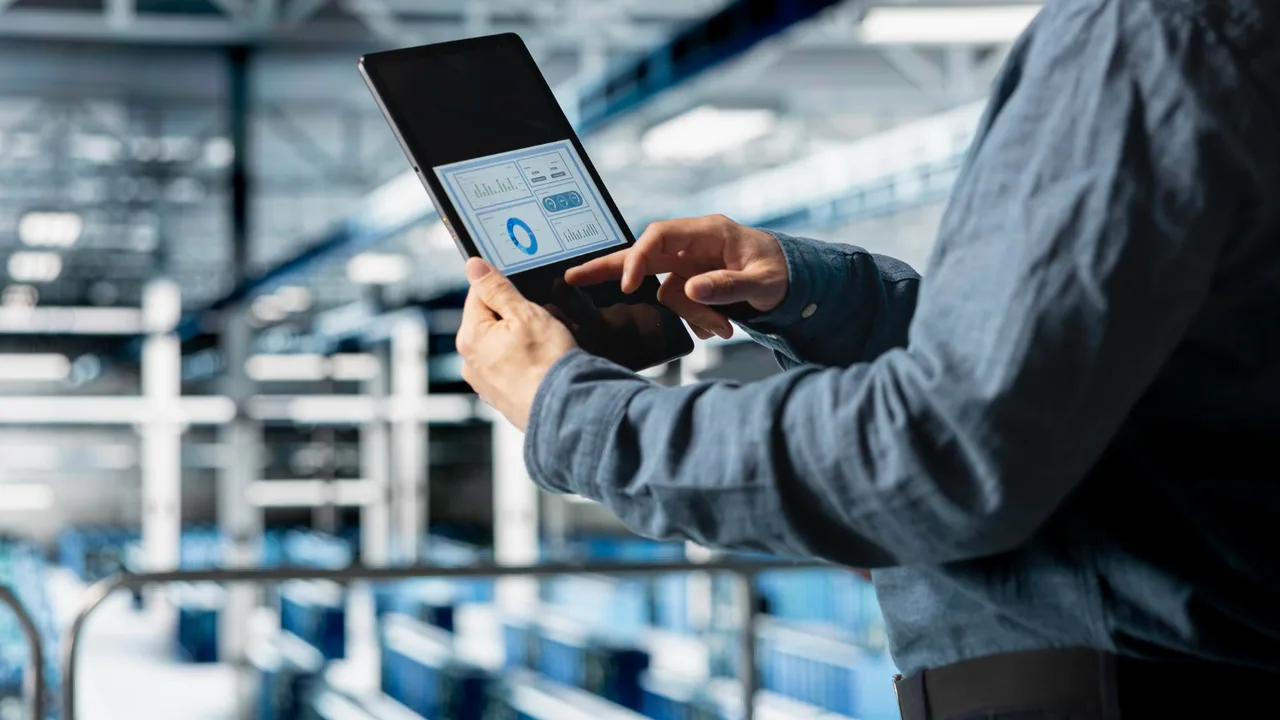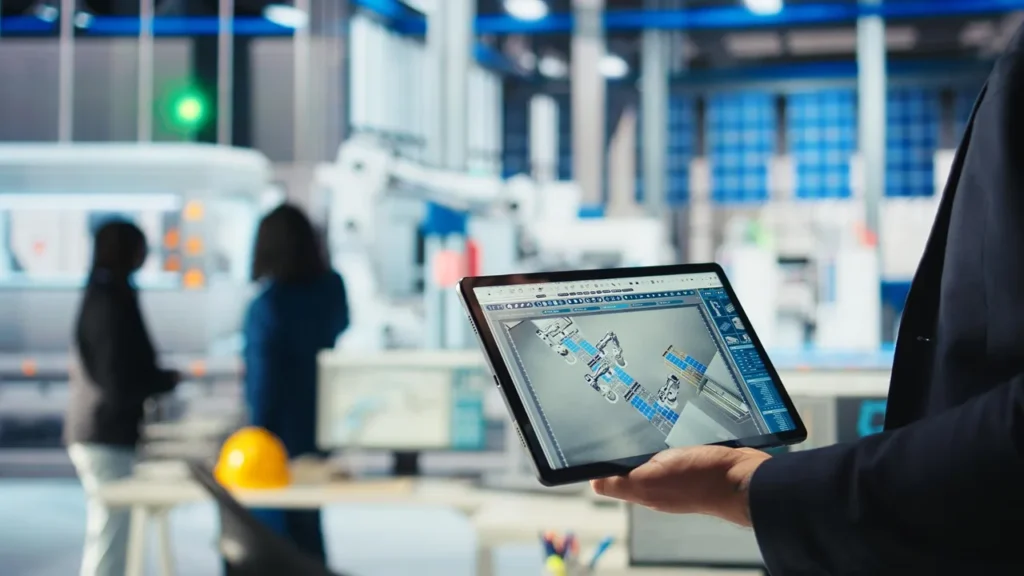The rise of the smart factory cloud marks a new era in industrial transformation. By combining automation, connectivity, and intelligence, manufacturers are turning traditional production lines into dynamic, data-driven ecosystems. Cloud computing, combined with edge computing and IIoT (Industrial Internet of Things), enables real-time visibility, predictive insights, and remote collaboration that redefine modern manufacturing.
Introduction to Smart Factory Evolution
A smart factory represents the convergence of digital technology and manufacturing systems. Unlike traditional factories that rely heavily on human supervision, smart factories operate with interconnected machines, sensors, and software communicating seamlessly through the cloud. This integration forms the backbone of the smart factory cloud—a system where data flows continuously between the production floor and centralized analytics platforms.
The shift toward cloud-based manufacturing networks reflects a growing need for agility and scalability. Cloud integration ensures that production, logistics, and maintenance data can be analyzed instantly, allowing companies to make informed decisions and optimize performance in real-time. Through cloud platforms, factories can manage complex operations with reduced human intervention, achieving higher accuracy and efficiency.
Core Components of a Smart Factory Network
Industrial IoT (IIoT) as the Foundation
IIoT forms the foundation of any smart factory network. It connects machines, tools, and devices across production lines using embedded sensors and communication protocols like MQTT or OPC UA. These connected systems collect and transmit operational data—temperature, vibration, speed, and pressure—to the smart factory cloud for analysis and decision-making.
Through IIoT, factories gain full visibility of their operations. Equipment health can be monitored remotely, performance trends can be identified early, and predictive maintenance can be triggered automatically. This level of interconnectivity improves uptime and minimizes production delays, helping manufacturers meet tighter deadlines without sacrificing quality.
Edge Computing for Low Latency Processing
While the cloud offers scalability, edge computing ensures speed. Edge computing allows data to be processed locally—at or near the source—before being sent to the cloud. This hybrid approach reduces latency and keeps operations running smoothly even during network disruptions.
For instance, a robotic arm in an assembly line can instantly adjust its grip force using data processed at the edge, instead of waiting for cloud feedback. Later, that same data is sent to the smart factory cloud for centralized analytics and machine learning training. The result is a faster, smarter, and more resilient production process.
Secure and Reliable Network Infrastructure
A secure and reliable network is vital for maintaining uptime in a connected factory. Modern systems rely on industrial Ethernet, 5G private networks, or Wi-Fi 6 to ensure stable communication between edge devices and cloud servers. To protect this flow of data, encryption, firewall segmentation, and continuous network monitoring are essential.
Reliability also involves redundancy—backups and failover systems that prevent data loss in case of hardware failure. With such infrastructure, the smart factory cloud can guarantee uninterrupted operation, enabling manufacturers to focus on innovation rather than troubleshooting.
Cloud Integration and Data Orchestration
How Cloud Computing Enables Smart Operations
The true power of the smart factory cloud lies in its ability to orchestrate and analyze vast amounts of data. Cloud platforms provide storage, computational power, and advanced analytics tools that support predictive maintenance, production scheduling, and quality control.
There are three main deployment models for cloud manufacturing:
- Public cloud: Cost-effective and scalable, ideal for smaller manufacturers.
- Private cloud: Provides higher security and control for sensitive industrial data.
- Hybrid cloud: Combines both, balancing performance and security.
Through these models, factories can integrate manufacturing execution systems (MES) and enterprise resource planning (ERP) systems. This creates a seamless flow of information between production and management, reducing data silos and improving coordination.
Data Synchronization Across Factory Ecosystem
Data synchronization is a key challenge in smart manufacturing. With machines, sensors, and edge devices producing data every second, ensuring that all information is aligned across systems is critical. The smart factory cloud manages this by employing APIs, data lakes, and synchronization frameworks that unify edge and cloud environments.
When latency and bandwidth are properly managed, manufacturers gain a single source of truth for decision-making. This means every department—from maintenance to logistics—works from the same updated dataset, improving efficiency and consistency across the production ecosystem.
Cloud Platforms Commonly Used in Smart Factories
Several leading cloud platforms have become central to smart factory transformations:
| Platform | Core Features | Advantages |
|---|---|---|
| AWS IoT Core | Device management, analytics, and real-time monitoring | Scalable and well-documented ecosystem |
| Azure IoT Hub | Seamless integration with Microsoft systems | Strong enterprise compatibility |
| Google Cloud IoT | Advanced data analytics and ML tools | Excellent for AI-driven manufacturing insights |
Each of these platforms supports a combination of edge computing, IIoT, and cloud integration to create efficient, intelligent, and adaptive manufacturing environments.
Benefits of Smart Factory Cloud Integration
Operational Efficiency and Predictive Maintenance
Integrating production systems with the smart factory cloud drastically improves efficiency. Sensors collect data continuously, enabling predictive maintenance that identifies equipment issues before they cause downtime. Maintenance teams can schedule repairs based on real-time alerts, minimizing production interruptions.
Additionally, supply chain operations become more transparent. Cloud dashboards provide end-to-end visibility, allowing manufacturers to adjust inventory and logistics based on live data. This improves resource utilization and reduces waste throughout the production process.
Scalability and Interoperability
One of the defining advantages of the smart factory cloud is its scalability. Manufacturers can expand their digital infrastructure without redesigning existing systems. Whether a company operates one plant or fifty, all can be managed under a unified cloud platform. This enables consistent monitoring, production planning, and data analytics across multiple facilities.
Cloud integration also improves interoperability—the ability of different machines and software systems to communicate seamlessly. With standardized APIs and open protocols, even legacy equipment can connect to the same digital network. This allows companies to modernize gradually while still benefiting from the agility of cloud-driven manufacturing.
Sustainability and Energy Optimization
Modern industries are increasingly adopting the smart factory cloud to achieve sustainability goals. By centralizing data collection and analytics, factories can track and reduce their energy consumption. For instance, energy dashboards powered by edge computing and IIoT sensors help identify energy-intensive processes and optimize them in real time.
Beyond efficiency, the cloud facilitates environmental reporting and compliance. Carbon emissions, waste levels, and resource usage can all be monitored through integrated analytics. This not only helps companies meet sustainability standards but also enhances their brand reputation in global markets focused on green manufacturing.
Challenges in Smart Factory Cloud Adoption

Cybersecurity and Data Privacy Risks
While cloud-based manufacturing offers enormous potential, it also introduces new cybersecurity challenges. Sensitive production data transmitted across networks may become a target for ransomware or industrial espionage. Protecting the smart factory cloud requires multi-layer security, including end-to-end encryption, multi-factor authentication, and continuous threat monitoring.
Factories must also comply with data privacy regulations such as GDPR or local data protection laws. Implementing secure gateways and strict access controls ensures that data flows safely between the edge, the cloud, and connected applications.
Integration Complexity
Integrating cloud systems with existing factory equipment is not always straightforward. Many manufacturers still rely on older control systems that were never designed for cloud connectivity. Bridging this gap requires middleware and open architectures that can translate between old and new protocols.
To overcome integration challenges, successful factories follow a phased approach—starting small, connecting one process at a time, and scaling gradually. Over time, these incremental steps form a robust ecosystem that links edge computing, IIoT, and cloud systems into one coherent network.
Cost and ROI Considerations
Cloud integration involves both capital and operational expenses. The initial setup may include upgrading network infrastructure, implementing new cybersecurity frameworks, and training staff. However, the long-term return on investment (ROI) is significant. By reducing downtime, minimizing waste, and enabling predictive maintenance, the smart factory cloud can deliver measurable financial benefits within months of deployment.
In many cases, manufacturers adopt a hybrid strategy—combining on-premise systems for mission-critical processes with cloud solutions for analytics and monitoring. This balance allows for cost efficiency without compromising security or performance.
Case Study and Real-World Implementation
To illustrate the value of cloud-based manufacturing, consider a medium-sized electronics plant adopting the smart factory cloud. Initially, the facility struggled with unplanned downtime and inefficient resource use. By implementing IIoT sensors and edge computing nodes on each production line, the plant began capturing equipment performance data in real time.
This data was then synchronized to a cloud analytics platform where machine learning models detected patterns leading to potential machine failures. Within six months, the company reduced downtime by 25% and energy use by 15%. Managers could remotely monitor every production cell, and technicians received alerts before failures occurred—proving that data integration directly translates into operational resilience.
Beyond efficiency, cloud connectivity also improved collaboration. Engineers across different departments accessed the same dashboards, shared production insights, and adjusted workflows dynamically. This kind of integrated visibility exemplifies how the smart factory cloud empowers decision-making at every level of an organization.
Future Outlook of Smart Factory Cloud Integration
AI-Driven Automation and Digital Twins
The future of manufacturing will depend heavily on artificial intelligence. As the smart factory cloud evolves, AI algorithms will automate decision-making, enabling autonomous production lines capable of self-adjustment. Digital twins—virtual models of physical factories—will allow manufacturers to simulate processes before execution, reducing trial-and-error and improving productivity.
Emergence of Quantum and Edge Synergy
Another frontier lies in combining edge computing with emerging quantum processing capabilities. Quantum computing could revolutionize optimization tasks such as logistics routing, materials science simulations, and predictive maintenance modeling. Meanwhile, advanced edge devices will continue to process data closer to machines, ensuring that AI-powered automation remains real-time and reliable.
Global Collaboration Through Cloud Ecosystems
Cloud technology will also make global collaboration seamless. Distributed manufacturing facilities across continents will share production data instantly, ensuring quality and consistency no matter where a factory is located. This level of integration will help companies achieve global scalability while maintaining local flexibility—a key advantage in the digital economy.
Conclusion
The integration of cloud computing, edge computing, and IIoT has transformed the manufacturing landscape. The smart factory cloud enables factories to operate more efficiently, predictively, and sustainably. While challenges such as cybersecurity and integration complexity remain, the benefits far outweigh the risks.
As industries continue to digitize, embracing the smart factory cloud is no longer optional—it’s essential. Manufacturers that invest in data-driven connectivity today will lead the next generation of industrial innovation tomorrow, setting the foundation for a truly intelligent and interconnected global production network.


